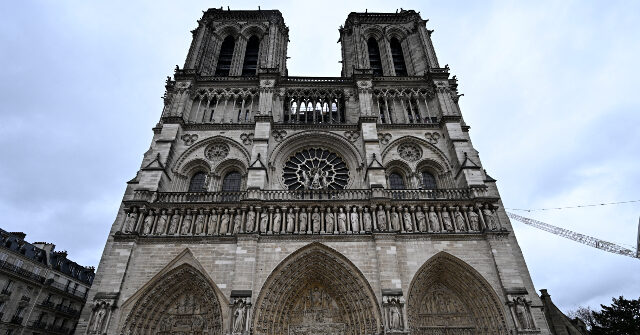The state-run Chinese media outlet Global Times recently claimed credit for the restoration of Notre-Dame Cathedral in France, emphasizing that China was the first to form an intergovernmental agreement with France regarding the cathedral’s restoration. This assertion coincided with the arrival of a team of specialists from the Emperor Qinshihuang’s Mausoleum Site Museum in Shaanxi Province, who traveled to Paris in February to assist in the project. The collaboration began with scientific research focused on the preservation of wooden relics, linking the restoration efforts of Notre-Dame with that of China’s famed Mausoleum, highlighting the international dimension of the restoration project grounded in shared historical and cultural values.
Despite the Global Times’ claims, logical parallels between Notre-Dame and the Tomb of Qinshihuang are tenuous at best. The Chinese publication attempted to bridge the gap by identifying both sites as representations of ancient civilizations that have faced similar risks, particularly with fire damage and preservation obstacles. However, this comparison was received with skepticism, as both landmarks serve very different cultural and historical significances. Notre-Dame embodies gothic architecture and religious heritage in France, while the Tomb of Qinshihuang is a monumental testament to Chinese imperial history and the awe-inspiring Terracotta Army buried alongside the emperor, pointing to the challenges of drawing direct connections between the two.
The Qinshihuang Mausoleum holds immense historical importance; it is the resting place of China’s first emperor, whose monumental burial site included an array of unique life-sized terracotta warriors. Discovered in 1974 and declared a UNESCO World Heritage Site in 1987, this site showcases China’s rich cultural heritage. Meanwhile, Notre-Dame, which was severely damaged by a tragic fire in April 2019, has undertaken a delicate restoration process involving an extensive array of skilled artisans and engineers from across the globe. This restoration is a testament to France’s dedication to preserving its historical and architectural legacy, contrasting sharply with the Global Times’ suggested narrative that downplays the major contributions from various international participants, particularly French expertise.
The Global Times also highlighted the spiritual ties between China and France throughout the restoration process while referencing various global events that supposedly drew the two nations closer, including the Wuhan coronavirus pandemic. Such claims, however, are regarded as disingenuous, comparing the pandemic to a disaster that ultimately strained international relations far beyond fostering friendship. The paper included references to the Russia-Ukraine conflict as another potential binding factor; however, this raises questions about the contrasting positions of China and France regarding the situation, as France has firmly condemned Russian aggression while China has remained neutral. This divergence often complicates diplomatic discussions, which is indicative of the complex geopolitical landscape shaping modern international relations.
Ultimately, the Global Times framed the restoration of Notre-Dame as an example of the essential collaboration needed in the face of global challenges. The article called for increased mutual respect and harmonious coexistence among civilizations to build a shared future, highlighting the ongoing necessity for free cultural exchanges and diplomatic efforts. However, critics of this narrative contend that China’s contributions should not overshadow the extensive involvement of French and international experts who undertook the painstaking task of restoring Notre-Dame, ensuring accuracy in historical representation and authenticity of the project.
Chinese media have actively highlighted China’s role in the Notre-Dame restoration, promoting the idea of an international cooperative spirit while downplaying the reality of the project’s management, which emphasized French craftsmanship and expertise. Through the Global Times narrative, there’s a notable attempt to reshape the discussion on cultural heritage restoration to allow for a greater Chinese presence and influence in international dialogues. While collaboration in restoration is valuable, the complexities of cultural significance and geopolitical contexts underline the importance of recognizing the nuanced realities behind international projects like the restoration of Notre-Dame.

